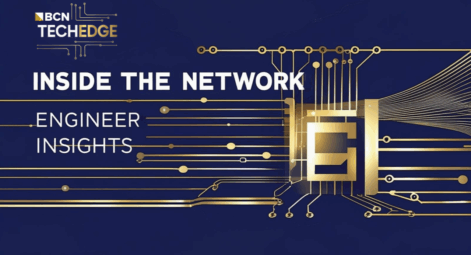
by Julian Jacquez, Jr.
Chief Operating Officer & President of BCN
There was a time when factories were defined by the hum of human labor and mechanical clatter. Today, they pulse with something far more profound: intelligence. Smart manufacturing is no longer science fiction it’s here, and it’s changing everything.
At the heart of this transformation is not just AI or sleek machines, but the lifeblood that powers them: robust and reliable connectivity. Picture an ecosystem where IoT sensors, 5G-enabled production lines, and sophisticated PLM systems all stream vast quantities of data not over patchy networks, but through seamless, unbreakable digital infrastructure.
Why Connectivity Is the Real Game Changer
The smart manufacturing market is on an explosive path—from roughly $353 billion in 2025 to over $1.34 trillion by 2034. That’s not incremental growth that’s a wholesale shift in how industries operate. This leap isn’t just about optimizing processes; it’s a full-scale evolution, where AI enables precision and control at an entirely new level.
What powers this evolution? Networks. Not just any networks, but unbreakable internet systems designed for continuous uptime, speed, and unwavering performance. In this era, a lagging connection isn’t just an annoyance it’s unacceptable.
Entering the Era of Hybrid Connectivity
Modern factories no longer rely on a single type of connection. Instead, they use a resilient mesh of network technologies:
- Wired Ethernet: Ideal for tasks demanding high bandwidth and minimal latency.
- Wi-Fi and Cellular (4G LTE / 5G): Offering flexible, large-scale coverage across expansive factory floors.
- LEO Satellites: Bringing connectivity where even cables dare not tread, perfect for remote operations.
Of course, having multiple connections is one thing; coordinating them is another. That’s where the magic of intelligent orchestration steps in ensuring data flows flawlessly, no matter which network layer it travels through.
SD-WAN: The Invisible Conductor
Imagine a maestro guiding an orchestra. That’s Software-Defined Wide Area Networking (SD-WAN) in the smart factory context. It sits above the physical infrastructure, enabling:
- Centralized management
- Application-aware routing
- Built-in security
Especially in AI-driven environments, SD-WAN prioritizes critical operational data keeping latency ultra-low, reliability high, and sensitive systems protected from cyber threats.
Unbreakable Networks = Unprecedented Innovation
When hybrid connectivity meets the intelligent orchestration of SD-WAN, you get more than just reliable internet you get a dynamic digital backbone, a foundation for innovation.
This isn’t merely about doing things more efficiently. It’s unlocking entirely new levels of agility, resilience, and creative possibility. Think synchronized robots moving with surgical precision, instantaneous AI-driven decisions, and production systems that adapt in real time. That’s the future one where networks make everything possible.
Final Take
The industrial revolution of tomorrow isn’t being built on raw power it’s being woven with seamless, intelligent connectivity. Unbreakable networks are not just an upgrade; they’re the very core of the AI-powered factory. And as the smart manufacturing market rockets toward $1.34 trillion, one thing is clear: progress is accelerating and it’s riding on the backbone of unwavering connectivity.
What part of this revolution excites you the most? The AI, the connectivity, or the incredible innovations they enable?



